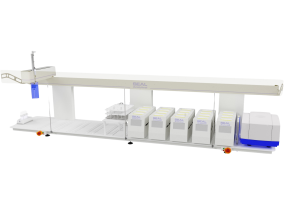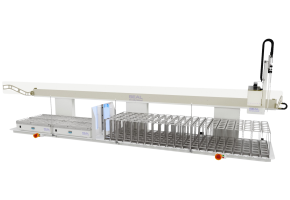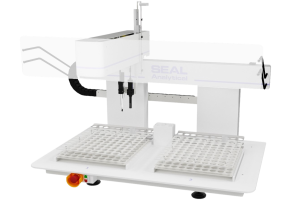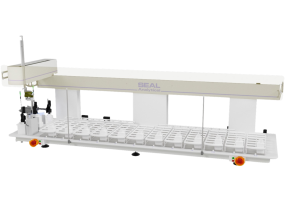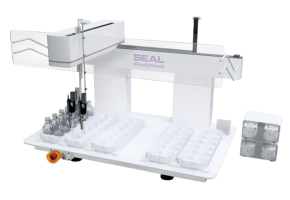MiniLab AR & AP
Compact, economic robotic precision and flexibility for automated environmental testing and sample preparation
.png?resolution=325x0&quality-95&trim=1)
Product Overview
Transform routine testing for BOD, pH, conductivity, and more into a cost-effective, high-throughput workflow with the MiniLab AR Series — a compact yet modular robotic platform engineered for precision and efficiency. Whether your lab handles water quality, soil and plant extracts, or industrial samples, this system adapts to your needs, reducing test time and labor costs while maximizing productive use of bench space.
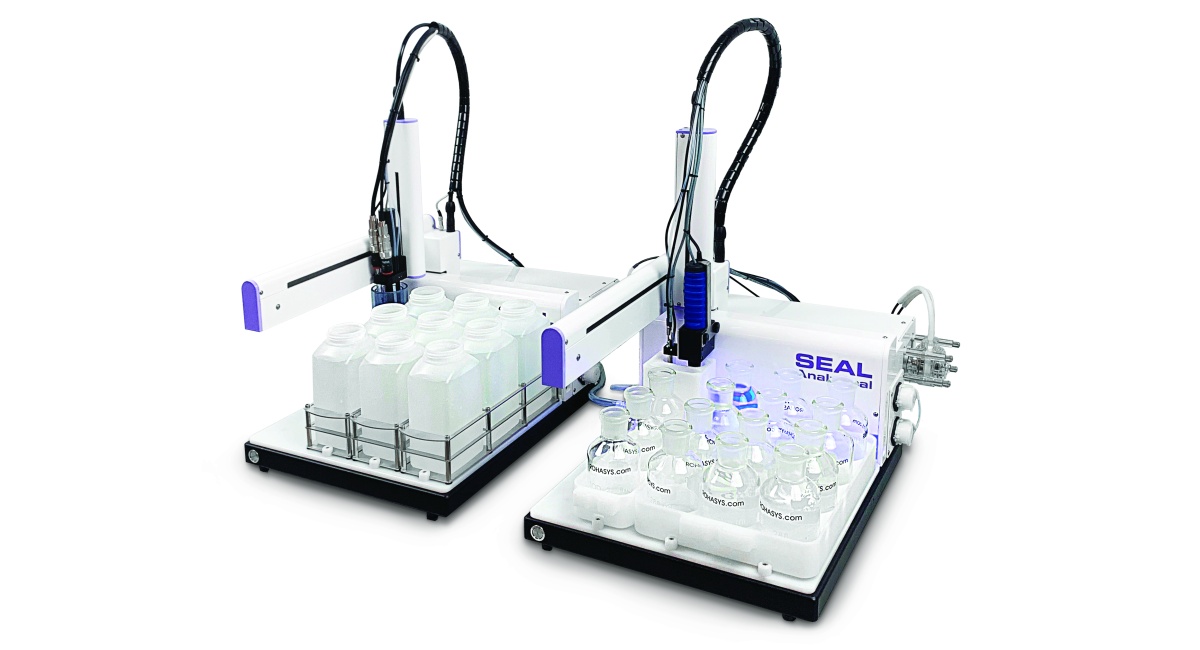
View the full specifications
Download the brochureWhy select the MiniLab AR?
Cost Efficiency Built In
- The compact, modular MiniLab AR minimizes real estate needs and overhead costs.
- Walk-away automation lowers labor demands and reduces per-sample expenses.
Space-Saving Size, Scale-As-Needed Flexibility
- Available in multiple footprint options — from the two-rack AR2 to the ten-rack AR10 — tailored to your lab’s volume and layout constraints. Custom rack designs also available.
Automated Workflows Across Multiple Lab Types
- Seamlessly automate pH, conductivity, turbidity, alkalinity, hardness, color, BOD, and cBOD.
- Pair with the AP (Auto Prep) module to handle sample prep tasks, including filtration, dilution, dosing, and pH adjustment — efficiently and economically.
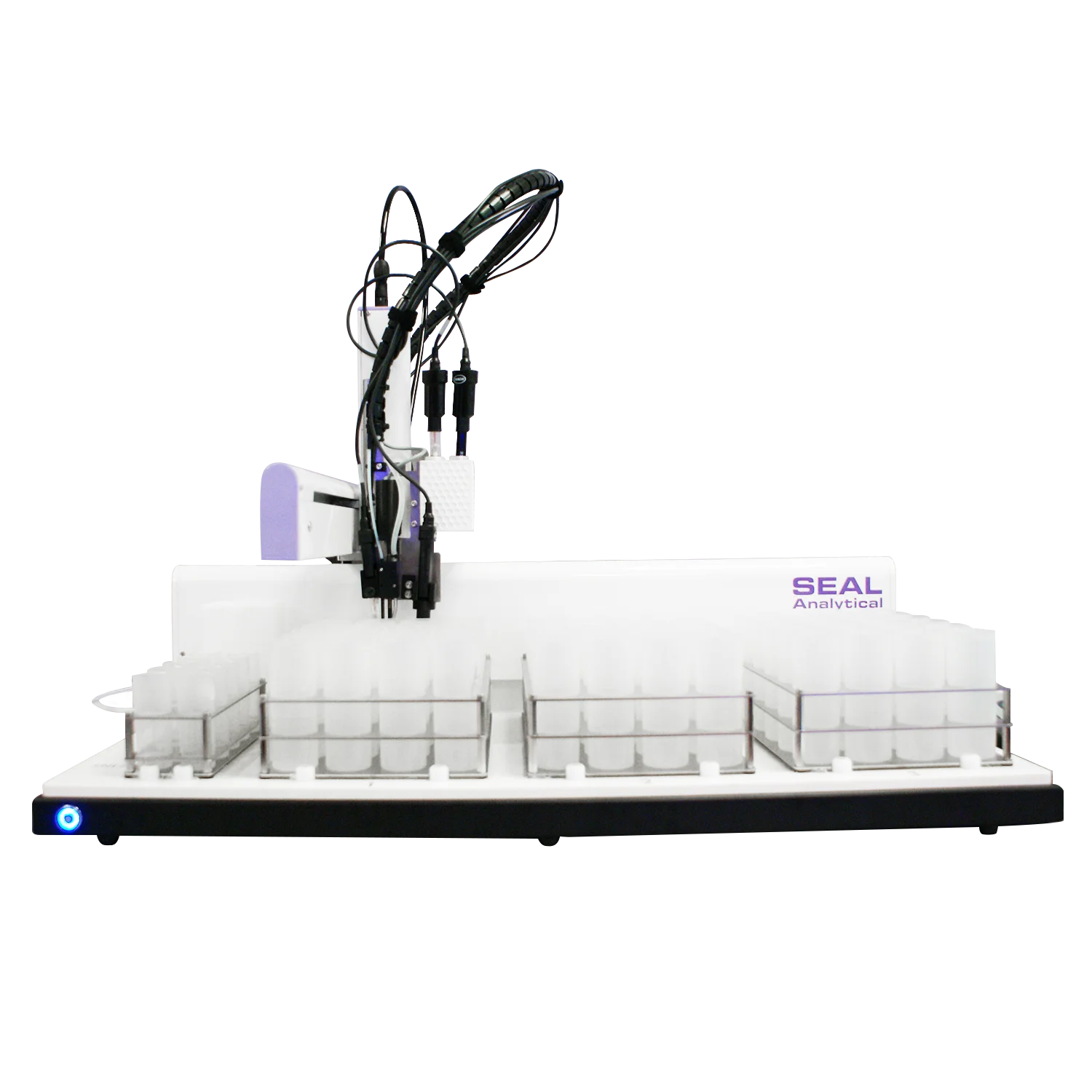
Flexible Automation Options
AP (Auto Prep) System
The SEAL MiniLab AP system can be added to an AR system to automate sample preparation. Before your selected test is read, a series of actions will be performed on the parent sample – automating the preparation. Parent sample bottles can be used to minimize waste and contamination, eliminating the need to use a new bottle. SEAL offers standard or custom racks for both units.
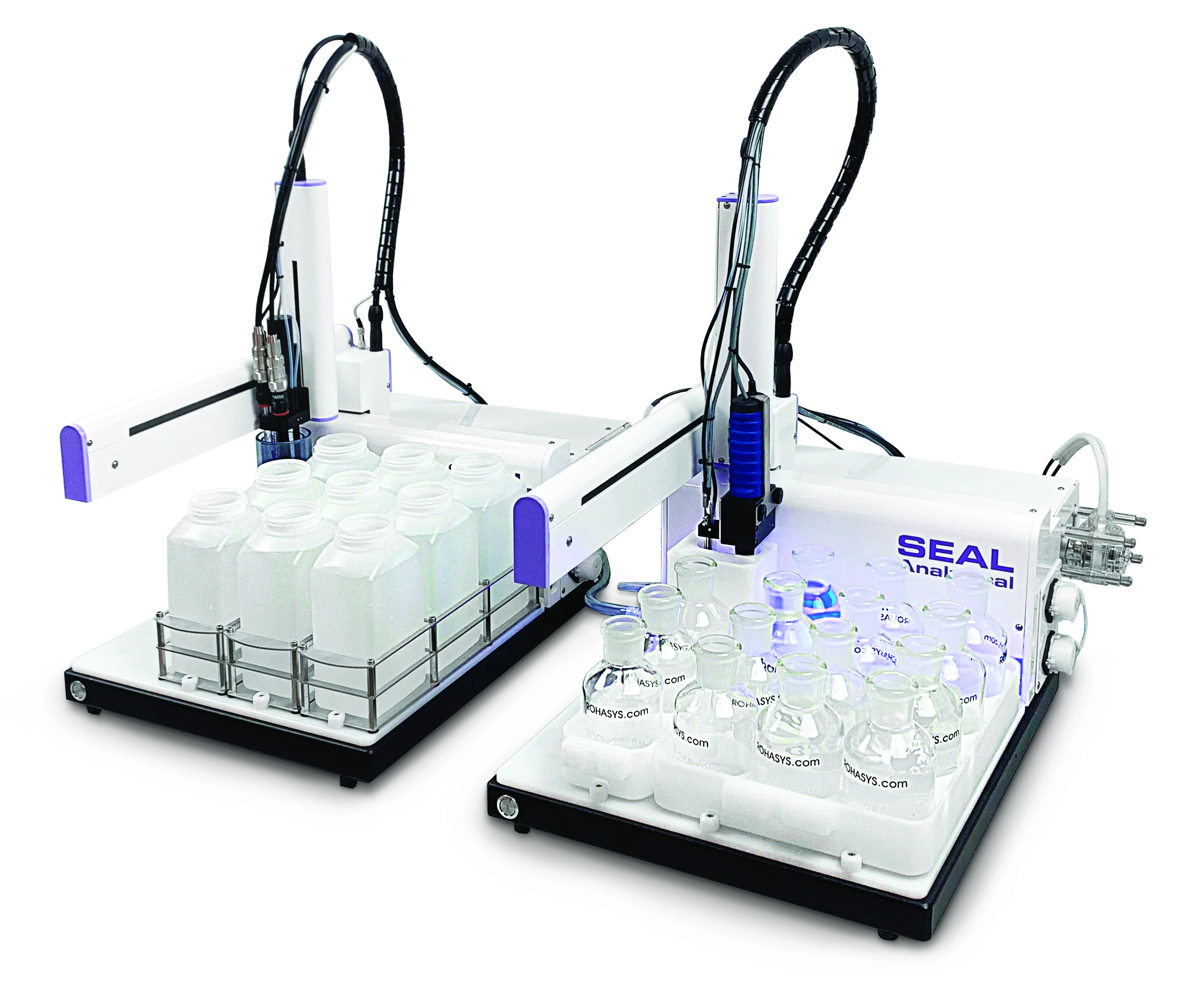
Together, the AP + AR systems offer a complete robotic solution — from preparation to analysis.
AR (Auto Read) System
The MiniLab AR systems are capable of many robotic testing and handling tasks. Almost any “off the shelf” probe or manual testing can be automated. Ideally suited for water and soil testing
such as pH, conductivity and BOD. With the addition of an AP system, sample preparation can be automated – including filtering, pH adjustment, sample dilutions and more.
Configurations for Every Lab
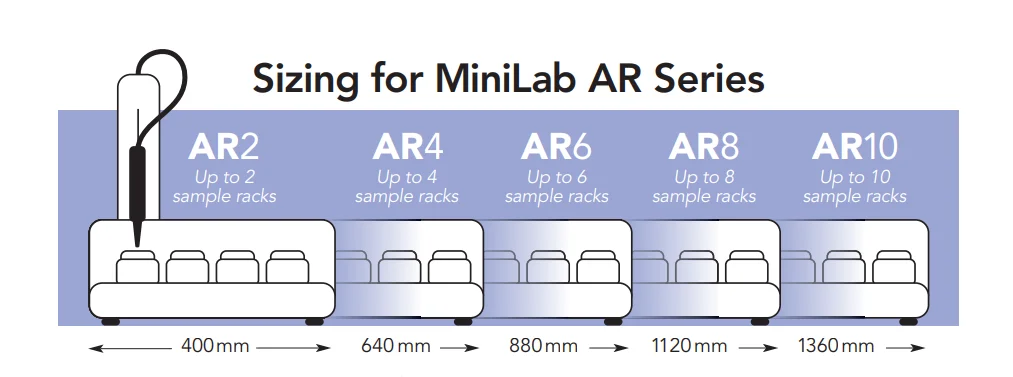
Custom rack designs are also available to fit your existing systems.
The MiniLab AR Series is available in multiple platform sizes, so you can scale to your workload:
AR2 – up to 2 racks (400 mm)
AR4 – up to 4 racks (640 mm)
AR6 – up to 6 racks (880 mm)
AR8 – up to 8 racks (1120 mm)
AR10 – up to 10 racks (1360 mm)
How the MiniLab AR & AP Works
Step 1
Samples placed on MiniLab
Analyst loads the sample racks with the vials, tubes, or containers containing the samples to be analyzed.
Step 2
Worklist created in MiniLab software
Using the MiniLab software, the analyst assigns positions and enters sample data and desired parameters into the software, or imports a work list from the LIMS.
Alternatively, the MiniLabs can create work tables automatically using onboard barcode scanning.
Step 3
System startup and initial cleaning
Upon startup, the system will automatically perform a flushing routine to clean the lines, rinse stations, and apparatuses, ensuring there are no contaminants that could affect the measurements.
Step 4
Calibration (if needed)
If needed, the system automatically calibrates using a set of provided standards. Calibration details are displayed in the software for review by the analyst.
Step 5
Analysis takes place
Sample preparation and measurements take place using the desired probes, meters, and apparatuses.
Step 6
Data Exported to LIMS
Once the measurements are completed, results are automatically recorded and stored in a table format within the software, allowing for easy access and analysis of the data. Data is exported to LIMS for further analysis and record keeping if desired.
(2).jpg?resolution=1200x650&quality=95)
Intuitive software for a tailored experience
SEAL’s intuitive BOD Analyzer software simplifies tracking and controls every step of the prep and analysis process. It offers real-time visualization of the run status, easy integration with your LIMS, and detailed reporting and tracking of all sample data. You have the flexibility to personalize aspects of the process, including the number of measurements, readings, stirring delays, measurement delay times, rinses, and more, allowing you to create methods that meet your specific laboratory requirements.
Available features and capabilities of the software will vary depending on the automation options selected for the MiniLab robotic handling system.
MiniLab AR & AP Methods
Explore a wide range of our most common methods for environmental, agricultural, industrial, and other markets. Don’t see what you’re looking for? Contact our team to review our full method options.
Scope and Application
This method covers the determination of Dissolved Oxygen in wastewater samples.
| Applicable Range | 0.5 – 20.0 mg/L ± 0.1 mg/L |
This method is equivalent to Standard Method 5210 B, ASTM D888, EPA 405.1, ISO 1899-1, 1899-2 and ISO 5815-1.
Method Description Biochemical Oxygen Demand (BOD) measures the depletion of oxygen over a five-day period. The process involves reading the sample at day zero (initial DO reading) and at day five (final DO reading), then subtracting to determine the oxygen depletion caused by microorganisms present in the sample.
Optical probes are commonly used, though membrane probes are also available.
Scope and Application
This method covers the determination of pH in drinking, surface, and saline waters, domestic and industrial wastes, as well as various extractions including soil extracts.
| Applicable Range | 0.00 - 14.00 |
This method is equivalent to Standard Method 4500-H+B, ISO 10523, NF T 90-008 and ASTM D 1293.
Method Description
pH (Power of Hydrogen) is a measurement of hydrogen ion (H⁺) concentration in a sample, expressed on a scale from 0 to 14. The measurement is performed using a combined glass electrode. The voltage detected is compared against a calibration curve to determine the sample’s pH.
Scope and Application
This method covers the determination of conductivity in water samples, as well as various extractions including soil extracts.
| Applicable Range | 0.01 μS/cm – 200,000 μS/cm |
This method is equivalent to Standard Method 2510 B, ASTM D 1125, ISO 7888 and EN 27888.
Method Description
Conductivity is determined by measuring the conductance of a sample in comparison to a standard potassium chloride (KCl) solution. A conductivity cell with two plates of opposite charge is used. Ions in the solution move between the plates depending on the resistance of the solution. Conductivity is expressed as the reciprocal of electrical resistance
Scope and Application
This method covers the determination of turbidity in wastewater, surface water, and drinking water samples.
| Applicable Range | 0.5 – 200 NTU |
This method is equivalent to Standard Method 2130 B, ASTM D1889, and EPA 180.1 (White Light), ISO 7027 and EN 27027 (Infrared).
Method Description
Turbidity is determined by measuring the intensity of light scattered by a sample in comparison to a reference sample. The amount of scattered light is expressed in nephelometric turbidity units (NTU); the higher the NTU, the more turbid the sample.
Scope and Application
This method covers the determination of alkalinity in wastewater, surface water, and drinking water samples.
| Applicable Range | 20 – 1000 mg/L as CaCO3 |
Method Description
Hydroxyl ions in the sample, resulting from dissociation or hydrolysis of solutes, react with additions of a standard acid. Alkalinity is determined based on the pH at the endpoint of the titration.
Scope and Application
This method covers the determination of color in water samples.
| Applicable Range | 0 – 250 CU |
This method is equivalent to Standard Method 2120 C and EPA 110.2.
Method Description
Color is an important indicator of water quality. It is measured by comparison to a platinum standard, where 1 CU equals 1 ppm platinum. Typically, the test is performed spectrophotometrically using a flow cell at 410 nm, although additional wavelengths can also be used.
Looking for More Capacity?
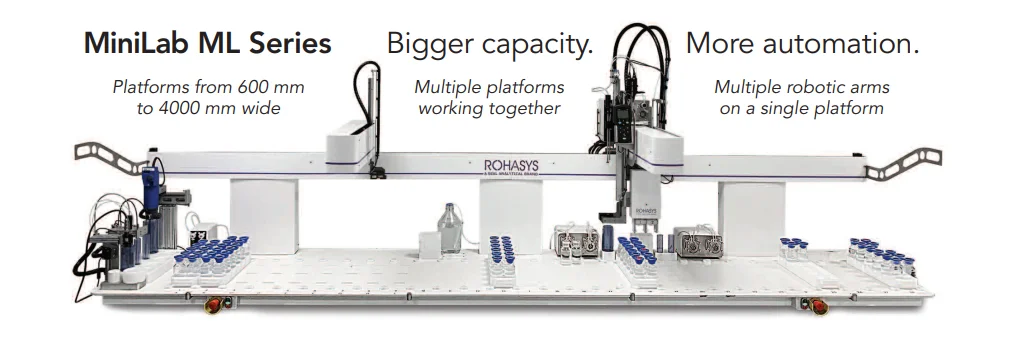
While the MiniLab AR Series is the ideal choice for compact automation, we also offer the MiniLab ML Series — our larger, high-capacity robotic platforms designed for laboratories with greater workloads and more complex automation needs.
Other models
Frequently Asked Questions
Below, we’ve listed a few frequently asked questions that will help you better understand our MiniLab Series. If you don’t find the answer you're looking for, please don't hesitate to contact our support team for further assistance.
Yes, the MiniLab software includes seamless import functionality from LIMS. You can create an import file in LIMS to transfer specific data into the MiniLab software. The data fields to be imported can be defined via Settings > Import Settings.
The MiniLab software also includes data export functionality to transfer data and results back to LIMS. Use the Export Settings to define the format of the export file.
The MiniLab AR is designed for environmental laboratories and can automate BOD, pH, conductivity, turbidity, alkalinity, hardness, and color testing. With the addition of the Auto Prep (AP) system, it can also handle sample preparation steps like filtration, dilution, pH adjustment, and chemical dosing.
The MiniLab AR series is modular and available in multiple configurations—from compact two-rack platforms (AR2) up to large ten-rack platforms (AR10). This flexibility allows you to choose a system that matches your laboratory’s workload and available bench space.
All applied methods are in full compliance with EPA, ISO, DIN, and Standard Methods. Robotic precision ensures reproducible results, reducing human error and strengthening the reliability of your compliance data.
Related articles
.jpg?resolution=428x267&quality=95)
.jpg?resolution=428x267&quality=95)
.png?resolution=428x267&quality=95)
Need support? We are here to help
Request Information
Fill out the form below to request information about our products and services.

